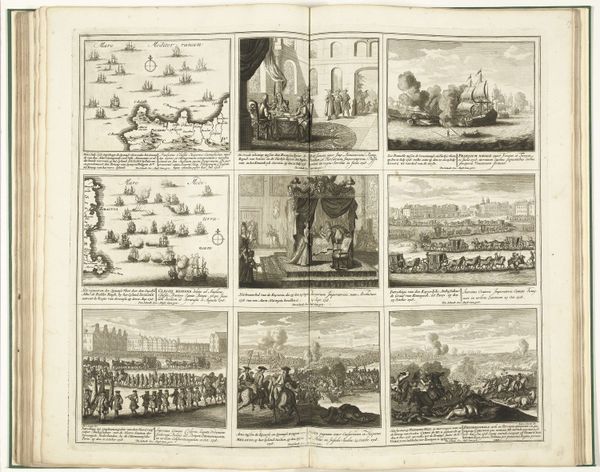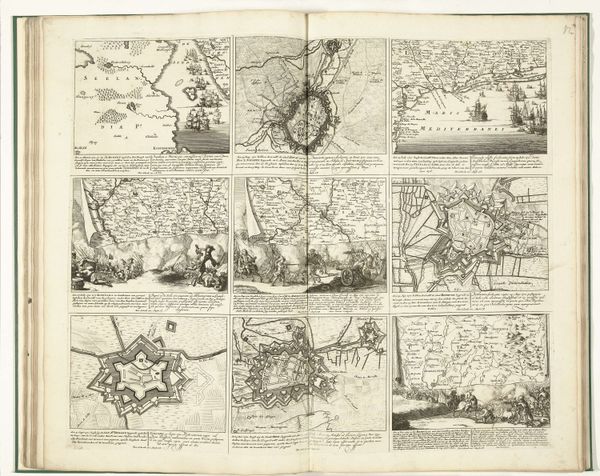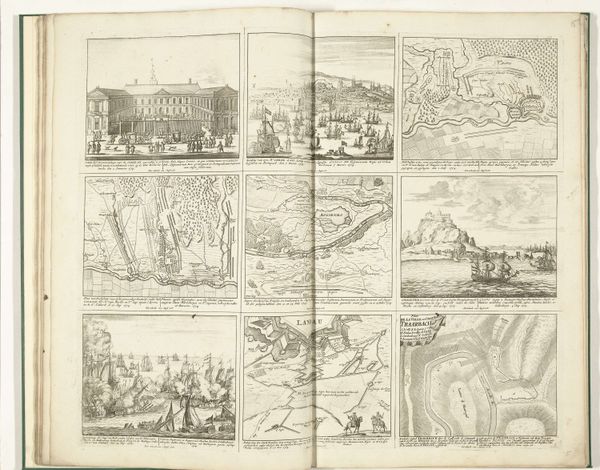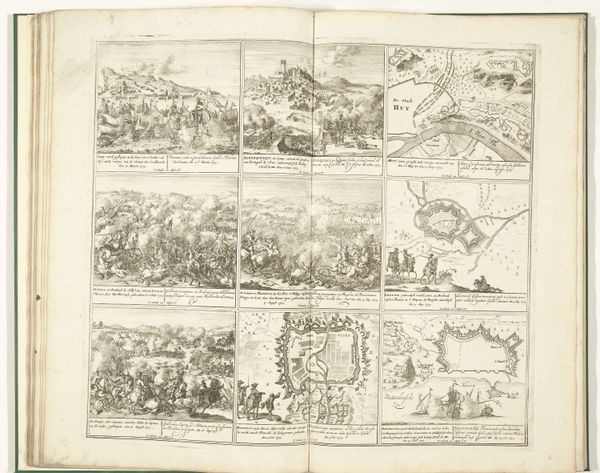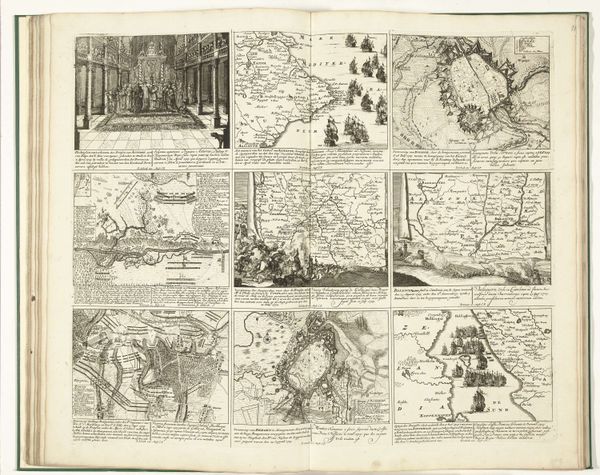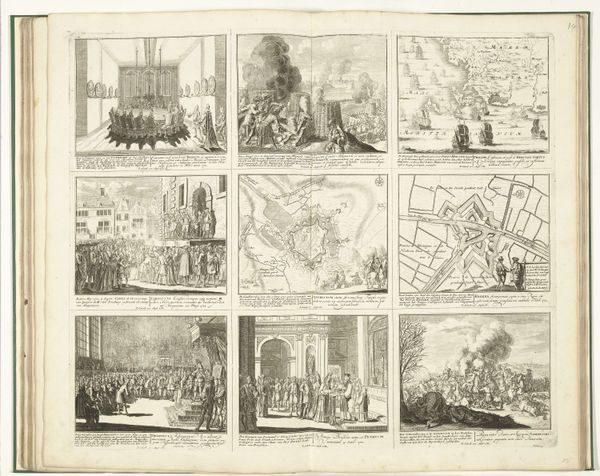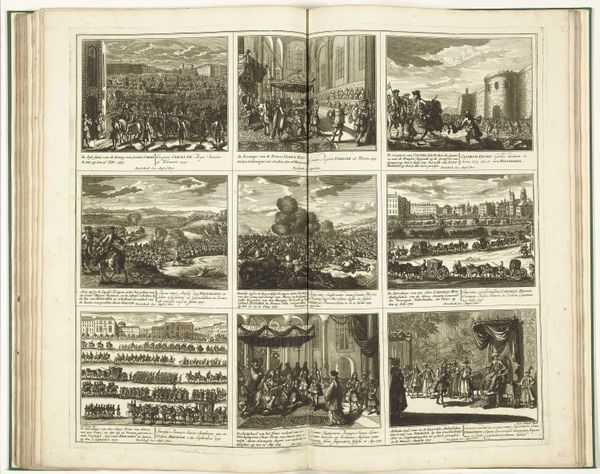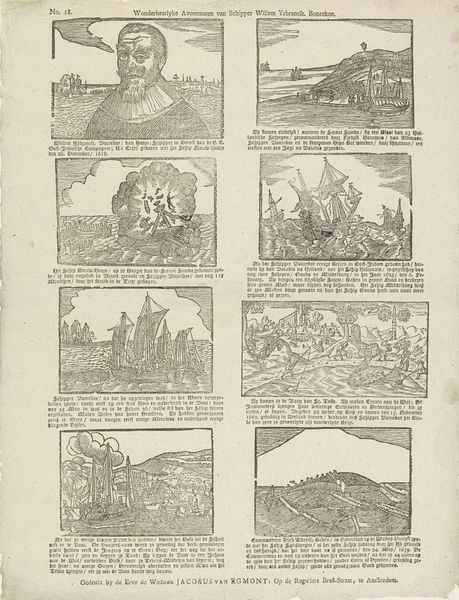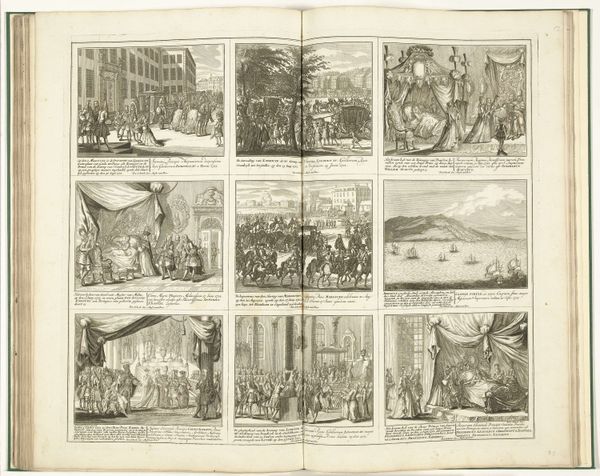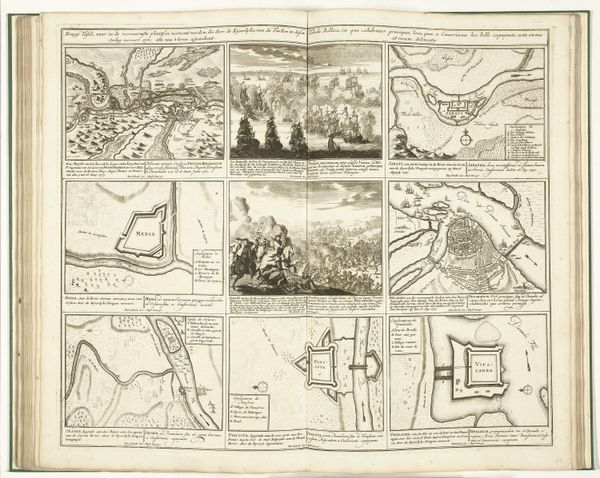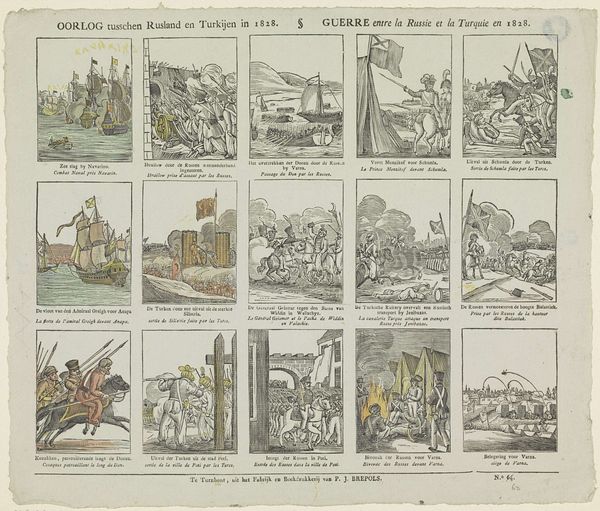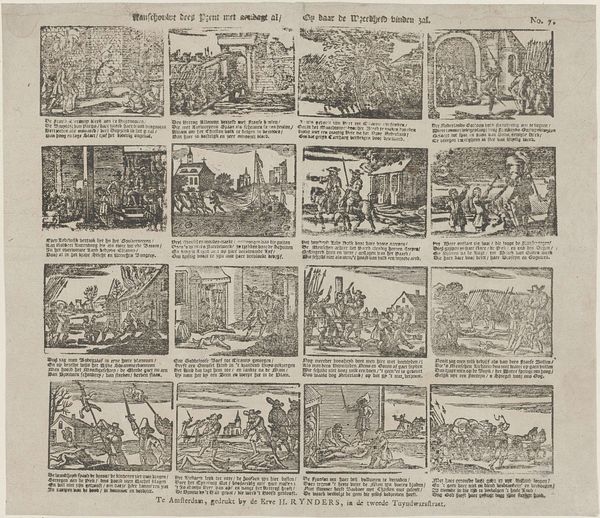
graphic-art, print, engraving
#
graphic-art
#
baroque
# print
#
engraving
Dimensions: height 538 mm, width 635 mm
Copyright: Rijks Museum: Open Domain
Editor: This is *Schouwburg van den oorlog* by Pieter Schenk, likely created between 1715 and 1722. It’s a print and engraving showing a series of scenes, almost like a comic book of its time. The detail is incredible, but I'm unsure what the overall narrative is. What do you see in this piece? Curator: I see a carefully constructed visual argument. Consider the title: "Theatre of War." Each vignette stages a different aspect of conflict – battles, sieges, diplomatic meetings – framing war not just as violence, but as a performance enacted on a global stage. What power structures do you think are being reinforced by presenting war in this manner? Editor: It feels almost propagandistic. Each scene is presented in this clean, ordered style that glamorizes the events. It kind of feels like history being rewritten by the victors. Curator: Precisely. Look closely at who's depicted as powerful, and who's rendered as vulnerable. Who controls the narrative, and whose stories are absent? The “theatre” is managed. This becomes crucial when thinking about its function as both history and art. Where do you see elements of early nationalism in the presentation of the events depicted? Editor: Well, seeing these triumphant rulers and neatly organized battlefields certainly inspires pride, but also suggests a powerful control. Curator: Yes, and the absence of dissenting voices amplifies that controlled message. Think about the period in which Schenk was creating this; what sociopolitical concerns could have influenced his artistic choices and presentations? Editor: This really sheds new light on the role of art as a tool for shaping public perception. I initially saw this piece as a historical document. I am seeing so much more about the use of early printmaking in solidifying ruling power. Curator: Exactly! By engaging with both art history and critical theory, we gain richer perspectives and connect historical artworks to contemporary sociopolitical issues.
Comments
No comments
Be the first to comment and join the conversation on the ultimate creative platform.

